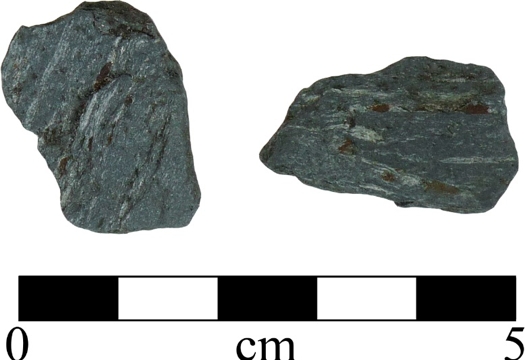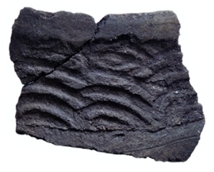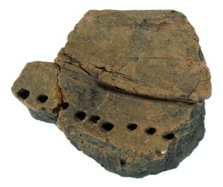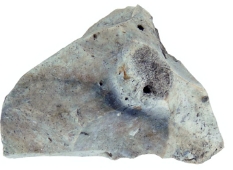Artifacts
Artifact Title
Swift Creek ceramics refers to decorative ceramics produced by complicated stamping. Complicated stamping is a method in which a wooden paddle, rocker, or cylinder with a carved design is pressed against the unfired clay of a vessel, impressing the design upon it (Willey 1949). Ceramics from Byrd Hammock belonging to this series include Swift Creek Complicated Stamped, Crooked River Complicated Stamped, and St. Andrews Complicated Stamped.

Swift Creek Series
When Willey initially described the Swift Creek series of ceramics, he included designs dating to the earlier Swift Creek culture (Early Variety Swift Creek Complicated Stamped) and dating to the later Weeden Island culture (Late Variety Swift Creek Complicated Stamped) into the same series. At Byrd Hammock, both early and late varieties of Swift Creek Complicated Stamped have been found. Some complicated stamped designs can be further distinguished based on the type of design, such as the shape of the lines, actual shapes, or other design motifs.

Within the Weeden Island series, researchers have consolidated most of the decorative styles into three main types of wares based on perceived function and use: mortuary, prestige, and non-prestige or utilitarian (Russo et al. 2011:56; Milanich 1994:185; see also Kohler 1978). Mortuary wares are exclusive to a burial context, often made into effigy shapes and having cut outs in the vessels (Russo et al. 2009:56). Prestige wares are mostly found in a burial context, but are present in village contexts in smaller quantities as well. Non-prestige wares consist of vessels which served daily functions in food preparation, serving, and storage, but can also be present in a mortuary context (Russo et al. 2011). Only non-prestige and prestige wares were identified among the ceramic types collected at Byrd Hammock by AAP.
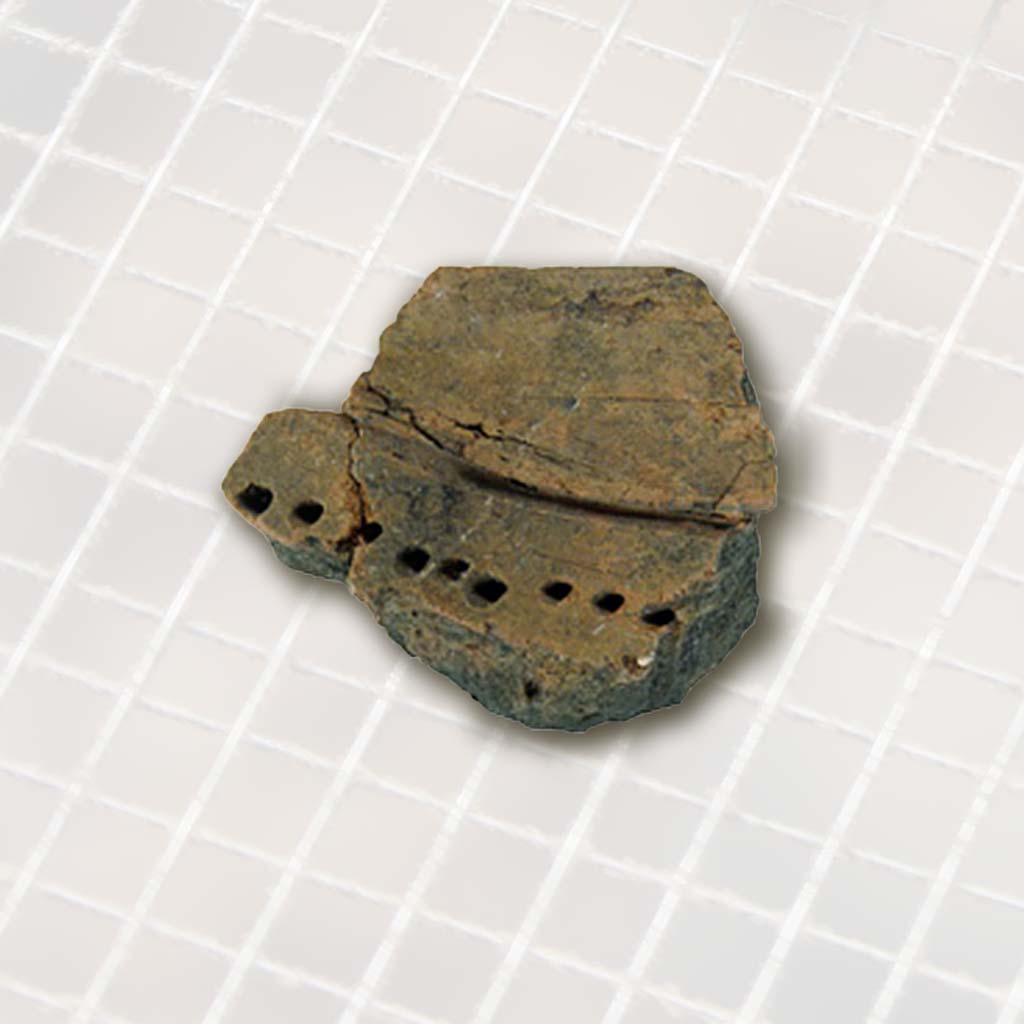
Weeden Island Series
Prestige or elite wares, such as Weeden Island Red, Incised, or Punctated, are presumed to have been differentially associated with social ranks or statuses such as chiefs, shamans, or their close relatives (Russo et al. 2011, 2014a; see also Milanich et al. 1984 and Pluckhahn and Cordell 2011). The prestige wares consist of Weeden Island Incised, Weeden Island Punctated, and Weeden Island Red.
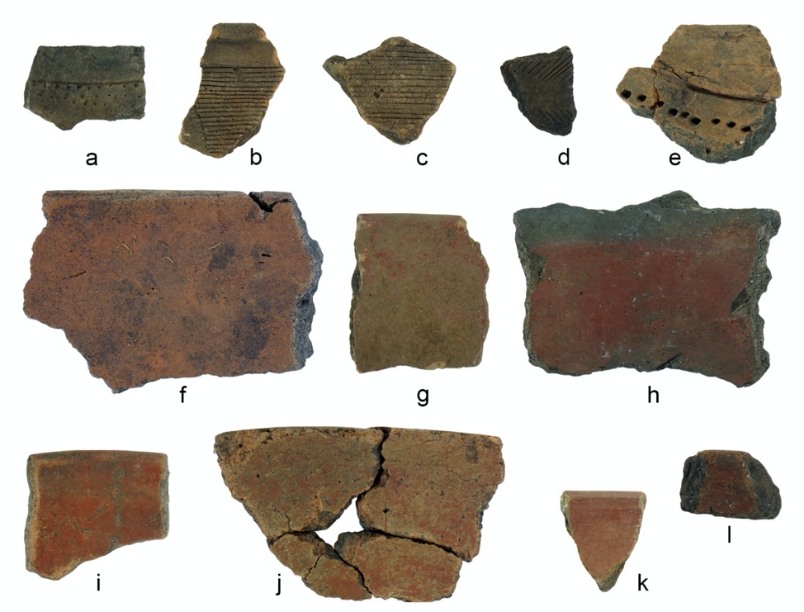
Weeden Island Series
Non-prestige wares refer to Weeden Island series ceramics that are not associated with social ranks or statuses. Rather, these types of ceramics were a part of everyday life and used for common household activities. Non-prestige wares include Carrabelle Incised, Carrabelle Punctated, Tucker Ridge Pinched, and Late Variety West Florida Cord-Marked.
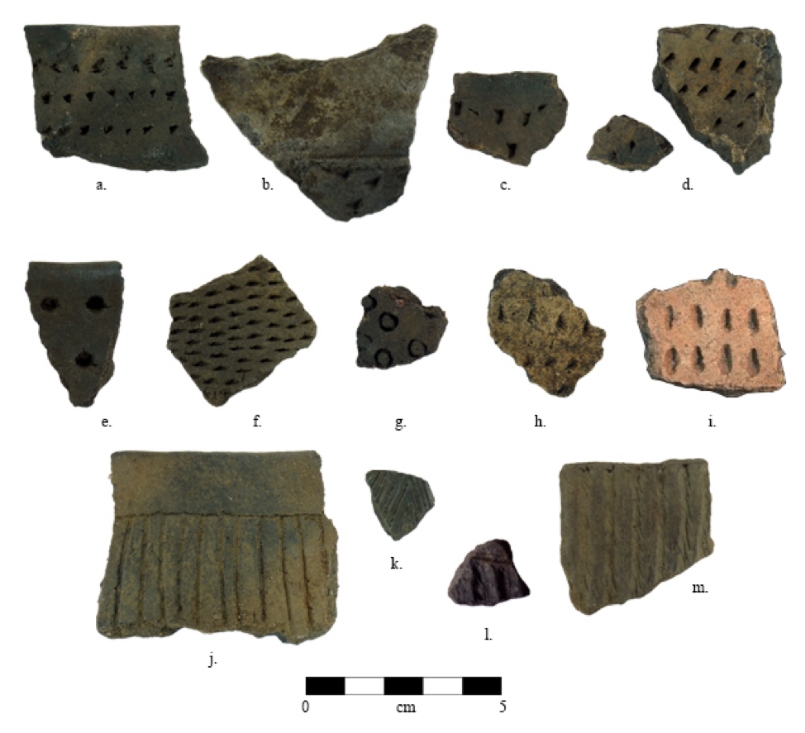
Formal lithic tools reflect a greater degree of effort in their manufacture and exhibit a stereotypical patterned form that is not found in most informal tools. Because of their repetitive recognizable forms, certain diagnostic tools can be identified and then attributed to a cultural period. Names such as knife, spike, or point have shapes and presumed uses associated with them which include cutting and/or piercing. In order to make these tools, people preferred high quality stone in order to easily chip away a rock into a tool. At Byrd Hammock, multiple types of stone, or raw material, was used such as hematite, chert, sandstone, quartz, even petrified wood.
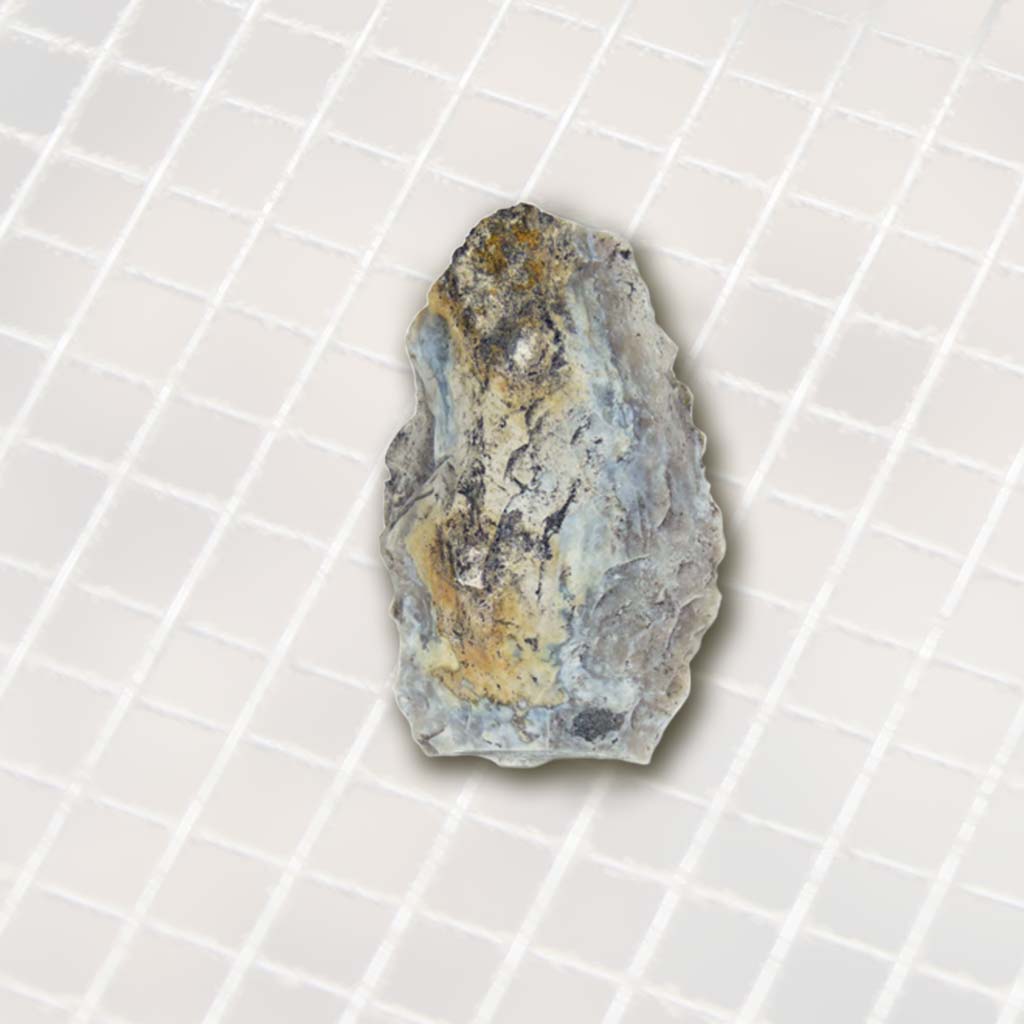
Byrd Hammock South
Lithic tools from Byrd Hammock South include projectile points, knives, bifaces, blades, mano, metate, scraper, cores, and drills. The lithic tools between Byrd Hammock North and South do not really differ, however, they illuminate how past peoples who occupied Byrd Hammock still relied on lithic tools for different activities.
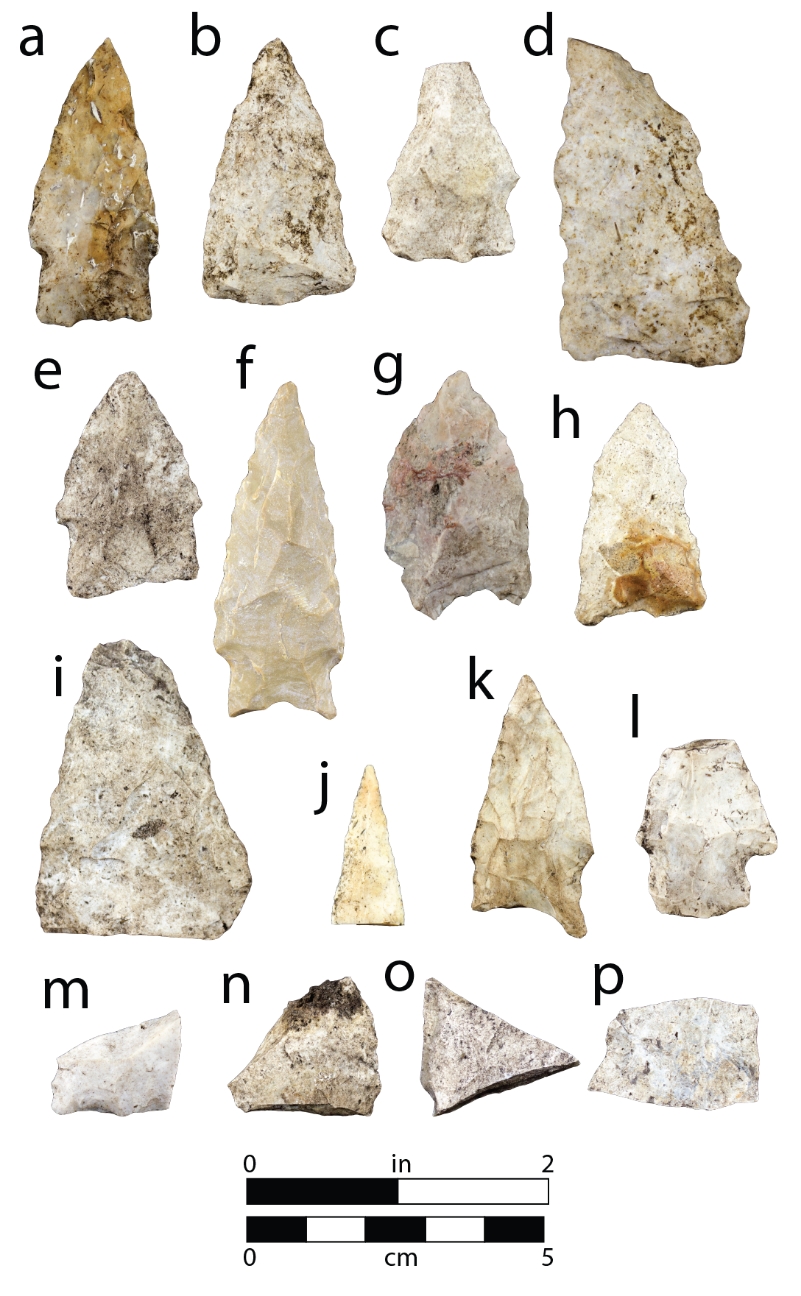
Obverse and Reverse View
Obverse and reverse of nutting stone showing use-wear depressions on both sides, FS 108.011
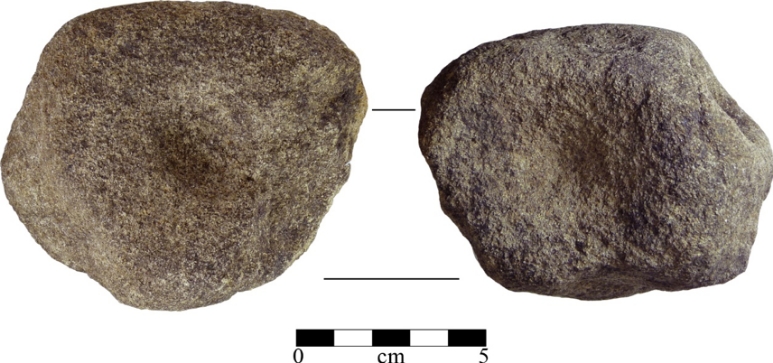
For the most part, these stones and minerals associated with prestige or ceremonial uses represent trade from exotic locales. Muscovite mica, crystal quartz, and graphite are not naturally occurring in Florida or southern Georgia, and those specimens recovered at Byrd Hammock most likely originated from the southern Appalachians in the Carolinas, although muscovite mica is also found in the eastern Piedmont of Alabama. Quartz, which is more “smokey” in appearance than the transparent crystal quartz type, may have come from southern Alabama.
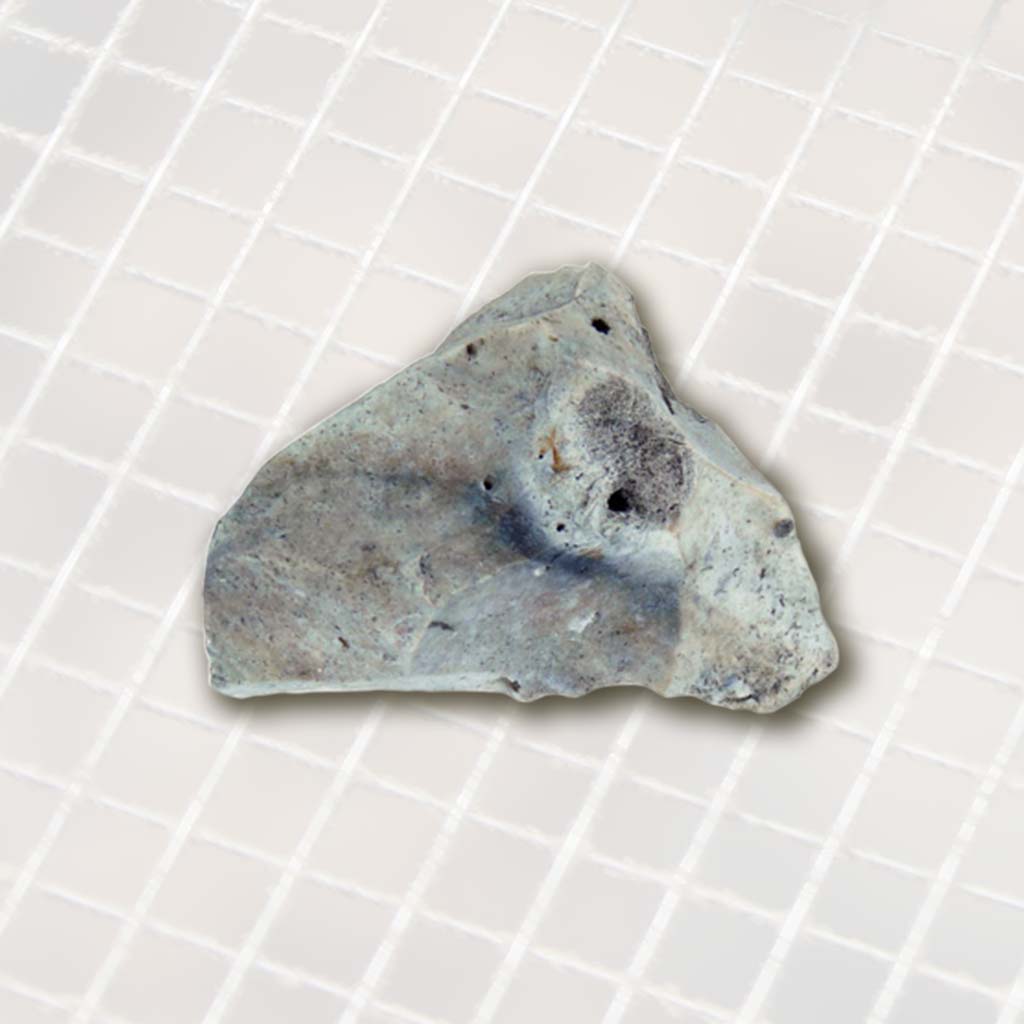
Crystal quartz is a colloquial name for clear to translucent forms of the crystalline mineral quartz. Although a chippable stone capable of being reduced to usable lithic implements like points and knives, crystal quartz, like graphite and mica, was attractive to Native Americans mainly due to its visual aspects. Clear, shiny, and reflective, crystal quartz, which is notoriously difficult to knap, was commonly chipped into objects such as points, which were of little utilitarian use, but displayed well for ceremonial purposes and undoubtedly held symbolic and ritual meaning in certain contexts. Crystal quartz beads, pendants, points and amorphous objects are commonly recovered in burial mounds and other ceremonial contexts. One modified crystal quartz tool was recovered from Byrd Hammock North; the base of a projectile point.

Two large pieces of muscovite mica with scoring marks along the margins suggest they were intentionally cut in half. Muscovite mica, a shiny and mirror-like reflective sheet mineral, may have held few practical uses to Weeden Island people. Most commonly, mica is found in the carved forms of animals, tools, and other objects in funerary contexts of burial mounds, suggesting spiritual and ritual use. Even the small flecks of mica often found in the paste of pottery sherds, if not incidental inclusions, may have been added for the mineral’s symbolic significance (e.g., Knight 2010:227-228). We speculate that the presence of sheets of mica with carving marks on them in Byrd Hammock North indicates the ring midden was a locus for the manufacture of mica funerary objects. Additional pieces and flecks of mica were recovered in both ring middens during the large-scale excavations, indicating that both the Weeden Island and Swift Creek people practiced mica carving at Byrd Hammock.
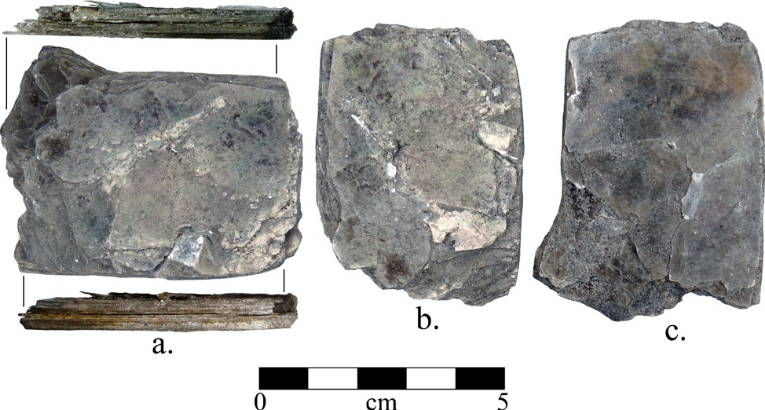
Byrd Hammock North
It has been suggested that graphite was used by prehistoric Native Americans as a possible source of black pigment (Knight 2010:68). Although for most decorative applications (e.g., skin and hide coloration) charcoal would have been more readily available, graphite, with its high melting point and harder crystalline structure may have been a preferred media in coloring fired pottery and decorating surfaces requiring defined lines and durability that charcoal may not have offered. In the area of Byrd Hammock, graphite is not naturally occurring. The nearest sources of graphite are found in northern Alabama and North Carolina.
